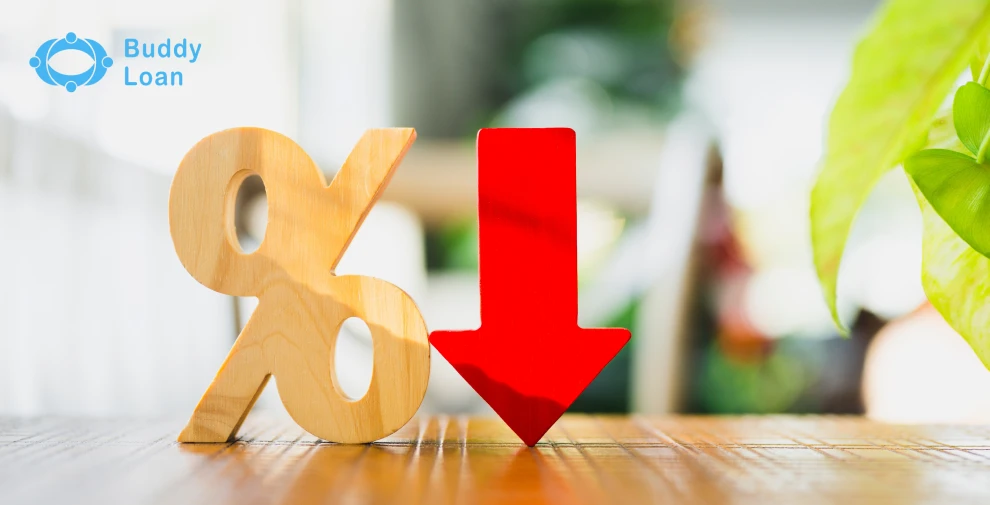If you’ve been keeping an eye on borrowing costs lately—especially personal loans—you’ve probably asked yourself: Are rates getting better?
The short answer: yes, they’re heading south. But there’s more to the story than just a dip in percentages.
Let’s break it down in plain terms—what’s behind the shift, how it impacts you, and how to make the most of it.
Where Personal Loan Rates Stand Today
Personal loans remain one of the most accessible forms of credit in India—no collateral needed, quick approvals, and money that can be used for just about anything. But that convenience often comes at a cost: interest rates.
As of June 2025, most banks and NBFCs are offering personal loan interest rates between 10% and 24% per annum, with some outliers going as high as 36%. Here’s a quick look at a few lenders:
- IDFC FIRST Bank – 9.99%
- IndusInd Bank – 10.49%
- State Bank of India (SBI) – 10.30%
- ICICI Bank – 10.85%
- HDFC Bank – 10.90%
- Axis Bank – 11.25%
- Kotak Mahindra Bank – 10.99%
Some of the best rates are reserved for borrowers with strong credit profiles—think CIBIL scores above 750, stable monthly income, and solid repayment history.
Why Rates Are Moving Down
So, what’s driving this softening in rates? In a word: RBI.
The Reserve Bank of India has been on a mission to inject more liquidity into the market. In June 2025, they cut the repo rate by 50 basis points, bringing it down to 5.50%. That’s the third rate cut this year.
For those unfamiliar, the repo rate is the rate at which the RBI lends to commercial banks. Lower repo rates mean banks get cheaper money, and they’re encouraged to pass on those savings to borrowers.
On top of that, the RBI also reduced the Cash Reserve Ratio (CRR) by 1%, essentially freeing up more cash in the system. The idea? Make loans cheaper and boost consumer spending.
It’s already working. Several banks have begun tweaking their lending rates, especially for floating-rate loans that move in sync with the RBI’s repo changes.
What It Means for You
This is good news if you’re planning to take out a , or if you’re already repaying one and thinking about a balance transfer. Lower rates mean:
- Cheaper EMIs for the same loan amount
- More room to borrow without stressing your budget.
- Better chances of approval if your credit profile is solid
But remember, the actual rate you get still depends on your profile. Even in a low-rate market, someone with a weak credit score or patchy income might not see much benefit.
Your Profile Still Matters
Here’s a reality check: while rates are trending down, they’re not falling equally for everyone. Lenders still run a tight ship when it comes to risk.
Here’s what they look at:
- Credit Score: 750+ is the sweet spot
- Income Stability: Salaried professionals, especially in government or large private firms, get better deals
- Employment Type: Self-employed? Expect slightly higher rates unless your financials are rock-solid
- Existing Relationship: Already have a loan or account with the bank? You may get a better rate
So, even if RBI’s policies are creating the right environment, your personal credibility is what seals the deal.
Are Fixed and Floating Rates Affected Equally?
Not really.
- Floating-rate loans: These are directly linked to benchmarks like the repo rate. So if the repo falls, your rate can too.
- Fixed-rate loans: These stay the same throughout the loan tenure. If you already have one, a rate cut won’t affect your EMI—unless you refinance.
If you’re planning a new loan, consider the floating option if you believe the downward trend will continue. But if stability is your priority, fixed might be better, even if it’s slightly higher right now.
How Does This Compare with Gold Loans?
If you’re comparing loan options, you’ve probably thought about gold loans too.
- Interest rates: Often lower than personal loans (as low as 8–9%)
- Approval time: Super quick—sometimes same-day
- Credit score? Not a deal-breaker
- Collateral: You’ll need to pledge gold
So, if you have gold lying unused and need quick cash, a gold loan could be cheaper. But if you prefer no collateral, a personal loan still holds strong, especially now with rates coming down.
What Borrowers Should Do Right Now
Here’s how you can ride the current wave and borrow smart:
- : If it’s below 700, work on improving it before you .
- Compare lenders: Don’t just go with your primary bank—check interest rates, fees, and terms across platforms.
- Time your loan: If your need isn’t urgent, wait a bit more. Rates could drop further as the RBI signals more cuts.
- Consider balance transfers: Already on a high-interest loan? A transfer to a lower-rate lender can save big bucks.
Wrapping Up
Yes, personal loan interest rates are coming down in India, thanks to RBI’s push to make borrowing more affordable. But the actual benefit you receive depends on who you are as a borrower.
If you’ve got a clean credit history, steady income, and do your homework across lenders, this is a great time to borrow smarter. Whether you’re funding a big purchase, handling an emergency, or consolidating old debt, lower rates mean more breathing room.
And if you’re still unsure which lender or rate works best for you, makes it easy. It connects you to top banks and NBFCs in minutes and helps you compare offers, all in one place. You can download the to take that next step
